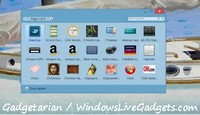System Processes explained: increase your familiarity with Windows
Here follow some of the most confusing names that appear in Windows Task Manager, you may need to know about:
System Idle Process : If it seems to consume a lot of resources, be happy. System Idle Process doesn’t consume anything, on the contrary, it indicates the percentage of the available resources on your computer. The higher this number is, the more resources are available. According to microsoft, “This process is a single thread running on each processor, which has the sole task of accounting for processor time when the system isn’t processing other threads. In Task Manager, expect this process to account for the majority of processor time”.
csrss.exe (client/server run-time subsystem) manages graphical commands; it is an important process and should not be terminated. Please note: if csrss is not located in the Windows/System32 directory, it might be a virus.
Lsass.exe is the local security authentication server; it generates the process responsible for authenticating users for the Winlogon service.
Smss.exe is the session manager subsystem, responsible for starting the user session. This process is initiated by the system thread and is responsible for various activities, including launching the Winlogon and Win32 (Csrss.exe) processes and setting system variables. After it has launched these processes, it waits for either Winlogon or Csrss to end. If this happens “normally,” the system shuts down; if it happens unexpectedly, Smss.exe causes the system to stop responding (hang).
Svchost.exe is a generic process, which acts as a host for other processes running from DLLs; therefore, don’t be surprised to see more than one entry for this process. Svchost.exe organizes the processes in several groups, so that in case one of them stops responding the others can still run.
Ctfmon.exe monitors the active windows and provides text input service support for speech recognition, handwriting recognition, keyboard, translation, and other alternative user input technologies.
